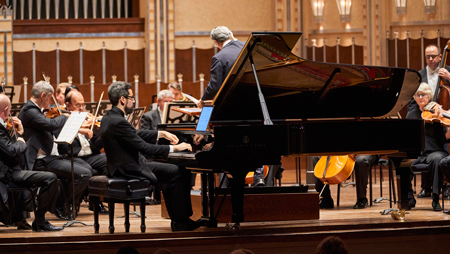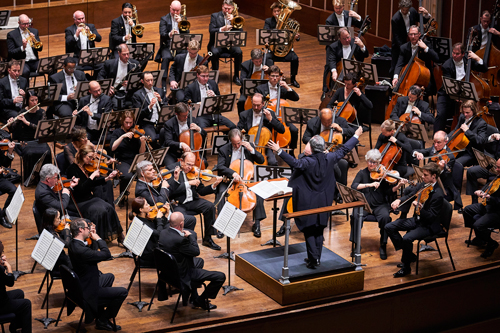by Daniel Hathaway

Biss was the catalyst for Sciarrino’s piece, a co-commission by the Saint Paul Chamber Orchestra, The Cleveland Orchestra, and Ensemble Intercontemporain. Part of Biss’s Beethoven/5, which has already produced works by Timo Andres and Sally Beamish and will lead to future premieres of works by Caroline Shaw and Brett Dean, the Sciarrino represents the midpoint in a project of generating new works suggested by Beethoven’s five piano concertos.
Il sogno di Stradella is supposed to have been inspired by Beethoven’s Fourth Concerto, but its relationship to that work is elusive — as is the meaning of Sciarrino’s work itself. The composer describes it in mysterious, philosophical terms:
This is not a collection of sounds, but of resonances, near and distant. The soloist withdraws, denying that position’s usual superiority, to reaffirm it on other levels. This does not seem to be a strange idea, for it touches upon and speaks to the transcendent essence of language/thought.
Speaking from the stage, Biss told the audience that the piece is a “conversation between two men’s dreams” — those of Sciarrino and Baroque composer Alessandro Stradella.
The fifteen-minute piece, less a conventional concerto than a small ensemble work with a prominent piano part, is scored for flute, oboe, clarinet, horn, trumpet, trombone, fourteen strings, and bass drum.
True to its origin in the land of dreams — where anything can happen and disparate visions can pop up, combine, and then disintegrate — the concerto begins in near silence with dry pizzicatos, tinkling gestures from the piano, trills from the flute, gentle nudges from the bass drum, and hazy swoops and slides from the strings.
Playing from an iPad, Biss conjured up Baroque-like gestures over wispy textures from the strings that inspired other instruments to join in, an ephemeral idea that vanished into thin air. Instrumental chatterings lead to close chords in the piano and near-silence at the end.
Biss elegantly negotiated the demanding solo part, which, though closely integrated with the ensemble, leaves the pianist with nowhere to hide. Marc Damoulakis made the bass drum’s contributions subtly poetic. It’s usually a sign of restiveness when an audience starts coughing during a piece, but on Thursday, weather changes might have been more to blame for persistent hacking that competed with Sciarrino’s delicate textures.

Over trembling strings, guest hornist Carsten Duffin spun a lyrical, faraway solo imitated by the winds. A slow, tremendous crescendo gathered into a stirring orchestral unison that crested, then retreated into seamless tradeoffs between woodwind soloists. Bruckner contrasts gentle, folkish music with triumphant gestures throughout the first movement, ending with a powerful restatement of the original horn theme.
The Orchestra’s viola section shone in the slow second movement, as did the flawless brass in the third. One of the great treats in Bruckner’s inventive Scherzos is that, after their contrasting trios, you get to hear their first sections all over again.
As Leonard Bernstein once said to a conducting class at Tanglewood, Bruckner never wrote a transition in his life, a characteristic that’s evident in the finale to the Fourth Symphony, with its seemingly unrelated ideas that succeed each other without formal logic. Those ideas are glorious, and when Bruckner is finally through with them, the movement and the symphony both end simply and abruptly.
Luisi and the Orchestra gave Bruckner Four a sonorous, committed performance. If any discouraging words are in order, the Orchestra sounded just a bit reined in — perhaps because the conductor favored an Old World, blended sound over a brighter, more extroverted timbre. But within those parameters, the performance was thrilling.
Photos by Roger Mastroianni.
Published on ClevelandClassical.com December 5, 2017.
Click here for a printable copy of this article



